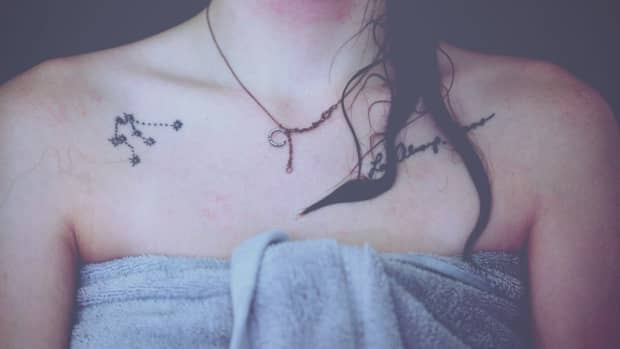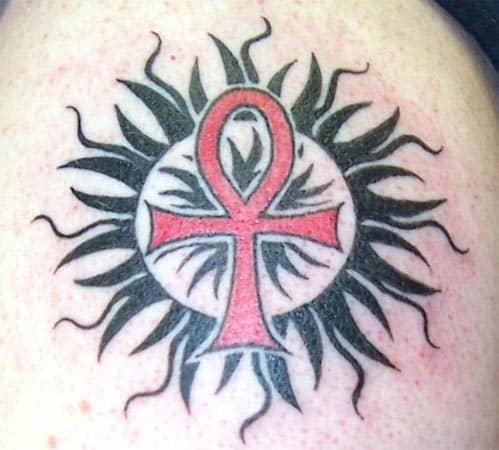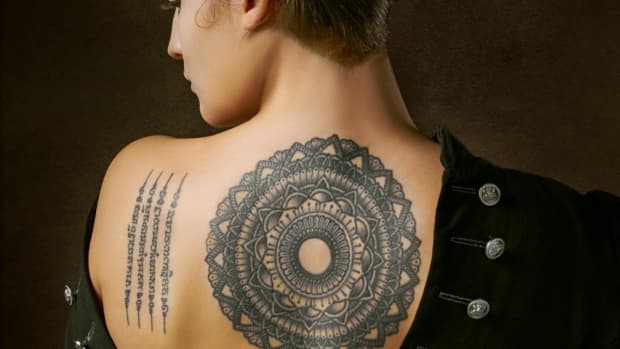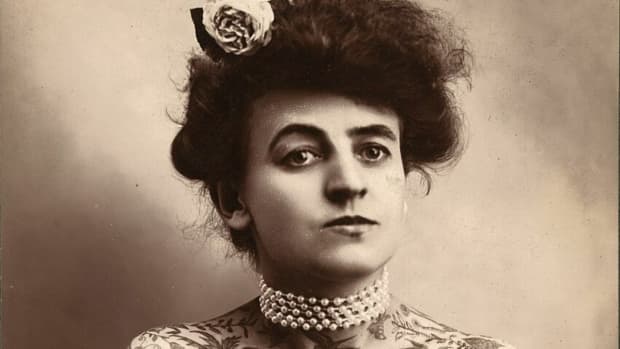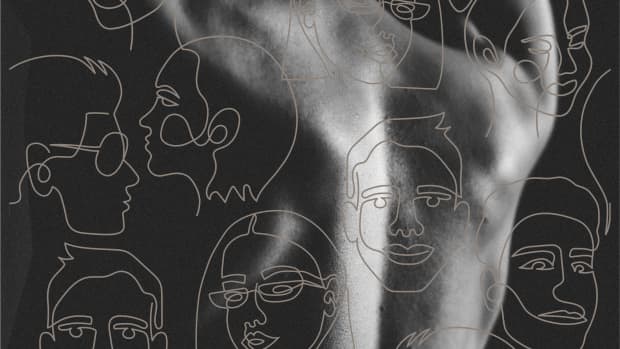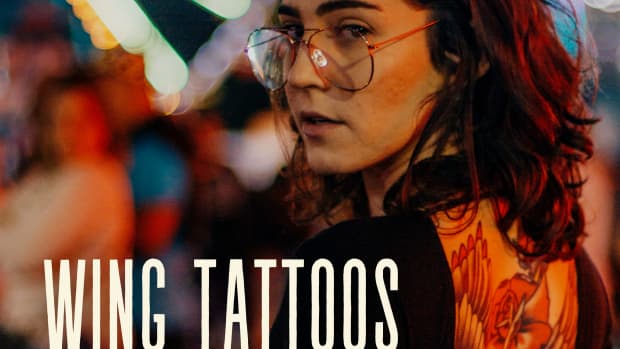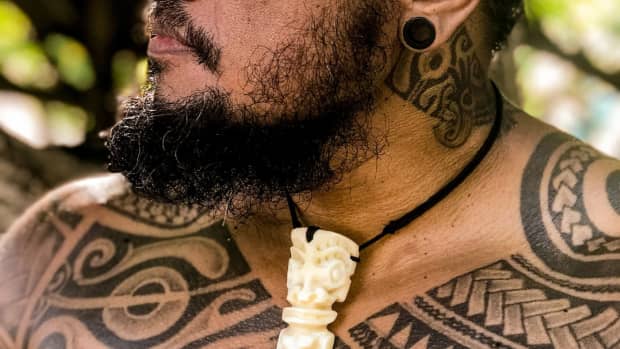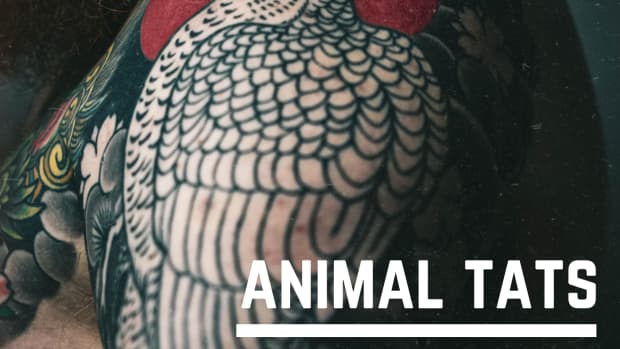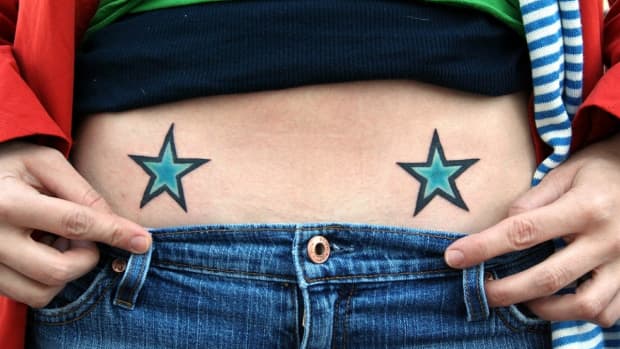Tribal Tattoo Pictures, Cultures, and Meanings
What Is a Tribal Tattoo?
For the most part, "tribal" tattoos are derived from and celebrate the ancient cultures of tribal communities. In many cultures, getting tattooed was (and still is) a sacred act or rite of passage that marked and celebrated familial or cultural belonging.
Tribal-style tattoos are usually done in all-black ink with thick lines. They may be inked in decorative lines, geometric patterns, or blackout inserts. The imagery is usually natural, and the style is usually bold and geometric. It may follow the style of art from Borneo, Hawaii, the Māori people of New Zealand, or many other cultures. Most artists have made at least one tribal tattoo, but some specialize in the style.
Modern tribal tattoos take their cues from ancient designs. Some of the cultures of origin are Bornean, Indian, Hawaiian, Māori, Native American, Samoan, Polynesian, and Aztec. Many of these cultures use tattoos as rites of passage, signs of social status, and totems of familial or ancestral identification. Many of these cultures also use tattoos for medicinal purposes.
Each culture has its own techniques and special designs, but most "tribal" tattoos are done in black ink only, although some artists do incorporate various shades and colors to break up the design.
Is a "Tribal" Tattoo Cultural Appropriation?
In this context, the term "tribal" is a catchall phrase that refers to traditional art from island-based or Polynesian cultures. Still, it might also refer to an art style from India, Africa, Native America, or another culture. The term was widely used in the 1990s, but today the term "tribal" is considered by many to be imprecise, ignorant, and somewhat offensive, as it groups so many cultures into one.
Cultural appropriation is the unacknowledged adoption of a culture's customs, practices, aesthetics, or ideas. It is considered particularly controversial when a member of a dominant culture appropriates from a minority culture. Because many of these cultures view tattoos as sacred markings that are earned rather than taken, getting a "tribal" tattoo just because you like how it looks but don't know anything about its significance is a form of cultural appropriation.
A "tribal" tattoo might be one that. . .
- marks one's belonging to a particular cultural group, family, clan, or tribe
- expresses a person's heritage or ancestry
- was done for medicinal purposes
- marks a significant rite of passage or life event
- merely copies and celebrates the style of another culture's aesthetic
Are "tribal" tattoos Polynesian?
Although many "tribal" tattoos are Polynesian, they might also be based on the art of African, Indian, Native American, or some other culture.

Maori face tattoos—moko kauae—are carved into the skin with chisels, a sacred sign that shows a person's family and cultural heritage.
Types of Tribal Tattoos
- Borneon: This is the most popular form of tribal tattooing, though most Dayak tattoos follow those of the Kayan Kenyah and Bakatan tribes. These tattoos hold up well over time. They have bold black lines that are less prone to fading and blurring than other styles.
- Hawaiian (Kakau): Hawaiian traditional tattoos from before Western colonial influence are all black and feature geometric elements. The most common images are flowers, palm trees, the sun, stars, and ocean waves.
- Māori (Tā moko): The Māori people of New Zealand created some of the most unique tattoos in the world. Their custom included facial tattoos, and today it continues to be used as a sacred form of family and personal identification. Traditonal ta moko tell the story of a person's family, achievements, and skills.
- Samoan (Tatau): Pe'a and malu are traditional designs that run from the waist to the knee, with each section depicting elements of a person’s character, family, and culture.
Different Words for Tattoo in Different Cultures
Batok (Philippines) | Qíng (China) | Kāhiko (Hawaiian) |
Peʻa (Samoa) | Tatoeëermerk (Afrikaans) | Tato (Indonesia) |
Tā moko (Māori) | Tatuu (Yoruba) | Irezumi (Japan) |
Recommended

The term "tribal tattoo" was coined in the 1990s, when tribal bracelets and armbands were all the rage.
What Do Tribal Tattoos Mean?
Because the term "tribal" refers to such a wide variety of cultures that interpret and use images differently, it is not possible to attribute specific meanings to summarize particular tattooed images. Still, for the wearer, a tribal tattoo might embody some or all of the meanings listed below.
- Family. A tattoo might be worn to display familial affiliation.
- Heritage. To honor one's heritage, ancestry, or cultural history.
- Transformation. A tattoo changes the way you look, allowing the world to see an interior evolution.
- A Rite of Passage. Some tattoos mark a transition from one stage in life to the next (like becoming an adult, getting married, or turning 50).
- Evolution. To mark important transformative life events (like birth, death, or recovery).
- Achievement. Many tribal tattoos mark a major life achievement.
- Journey. A tribal tattoo might be inked for leaving home, going to war, becoming an adult, or some other journey.
- Protection. A tribal tattoo might be worn like a shield, a powerful totem to protect the wearer from harm.
- Bravery, Endurance, and Strength. The process of getting a tattoo might show bravery and endurance.
- Love. A tribal tattoo might represent love for a pastime, a person, a family, or a culture.
- Nature. Tribal tattoos often represent a love of and a connection to nature (waves, sun, moon, river, animals, etc.)
Choosing a Tribal Tattoo
Tribal tattoos are a popular choice for first tattoos. They're simple to design, and most tattoo artists have made at least one in their career. Because they are usually inked only in black, they tend to hold up well with age and wear. For the same reasons, they are difficult to remove and cover, especially if they include thicker lines and larger designs.
Can Anyone Get a Tribal Tattoo?
If you are choosing a tribal tattoo, if you don't belong to that heritage, it's important to at least learn about the culture it refers to. It is considered disrespectful to adopt an image without knowing and respecting its origins.
Many cultures view tattoos as sacred, so you will need to keep this in mind if you are choosing a tribal tattoo. To honor the culture, you will need to honor its customs, history, and traditions, too.
Can Anyone Tattoo a Tribal Tattoo?
The same goes for a tattoo artist. When doing a tattoo, it is important to understand something about the history and culture it comes from. To do it right, you'd need to study it seriously.
It might be best to go to a Māori artist to get a ta moko tattoo. . . in fact, many would argue that you can't get a ta moko from a non-Māori artist. Howver, a ta moko can only be done by a Māori for a Māori. No respected Māori artist would do one on a non-Māori, since it is strictly reserved for people with whakapapa genealogy.
Polynesian tattoos fall into two basic categories: tapu (sacred) and noa (common, not sacred). Many believe that tapu imagery should only be given to those who are entitled to it, by descent, while others can use only noa imagery.














© 2008 jaymz



